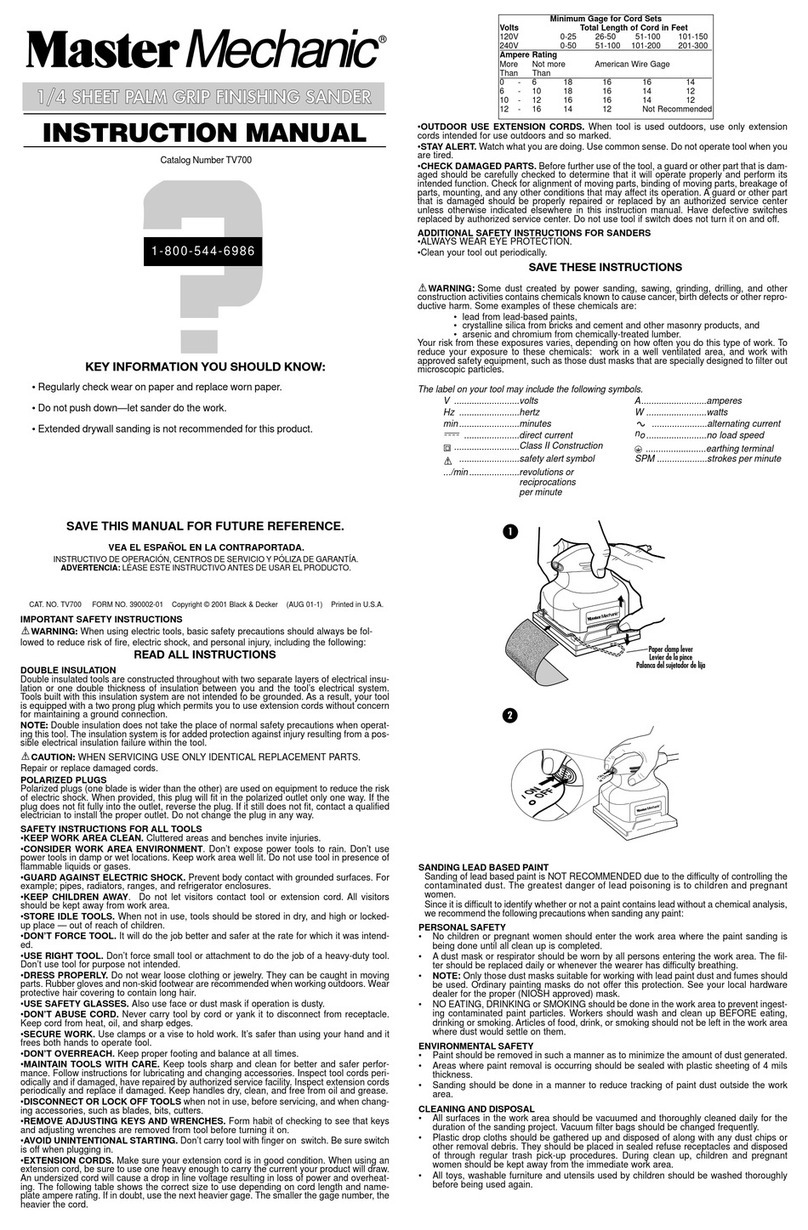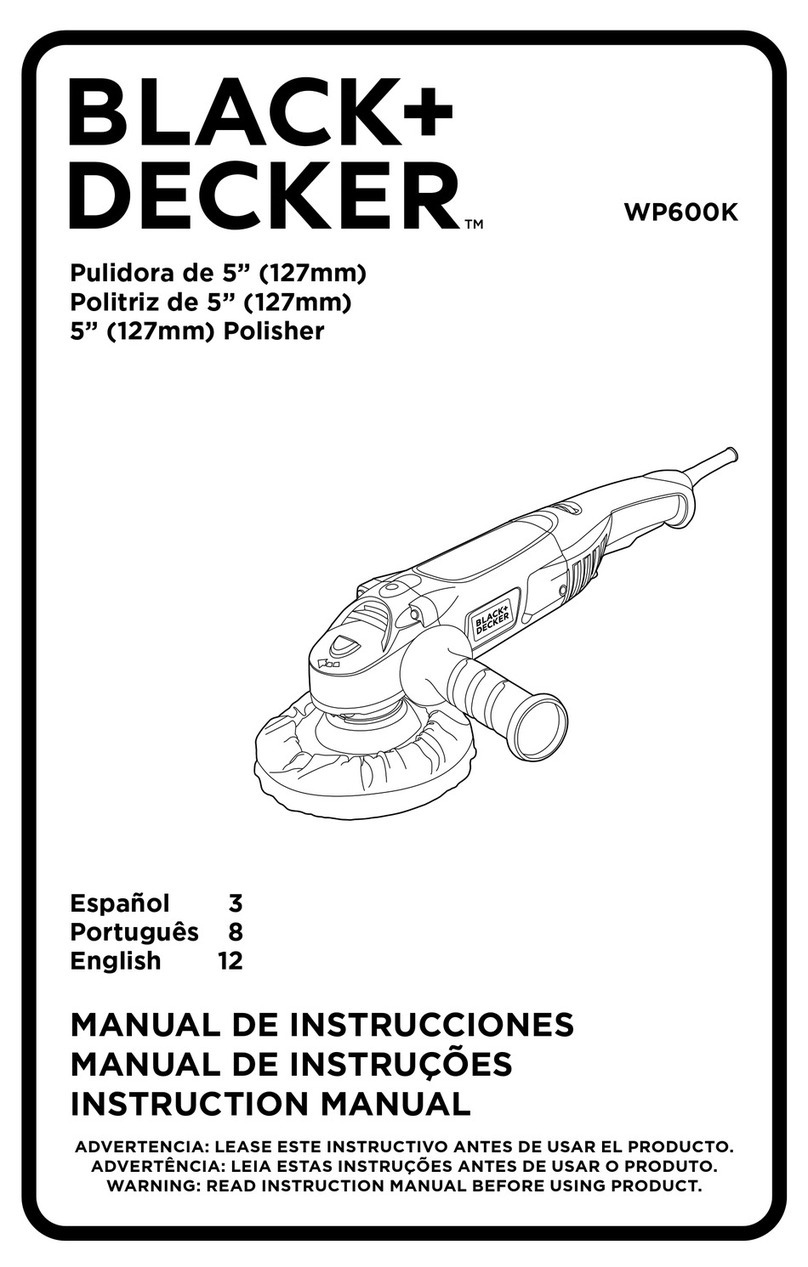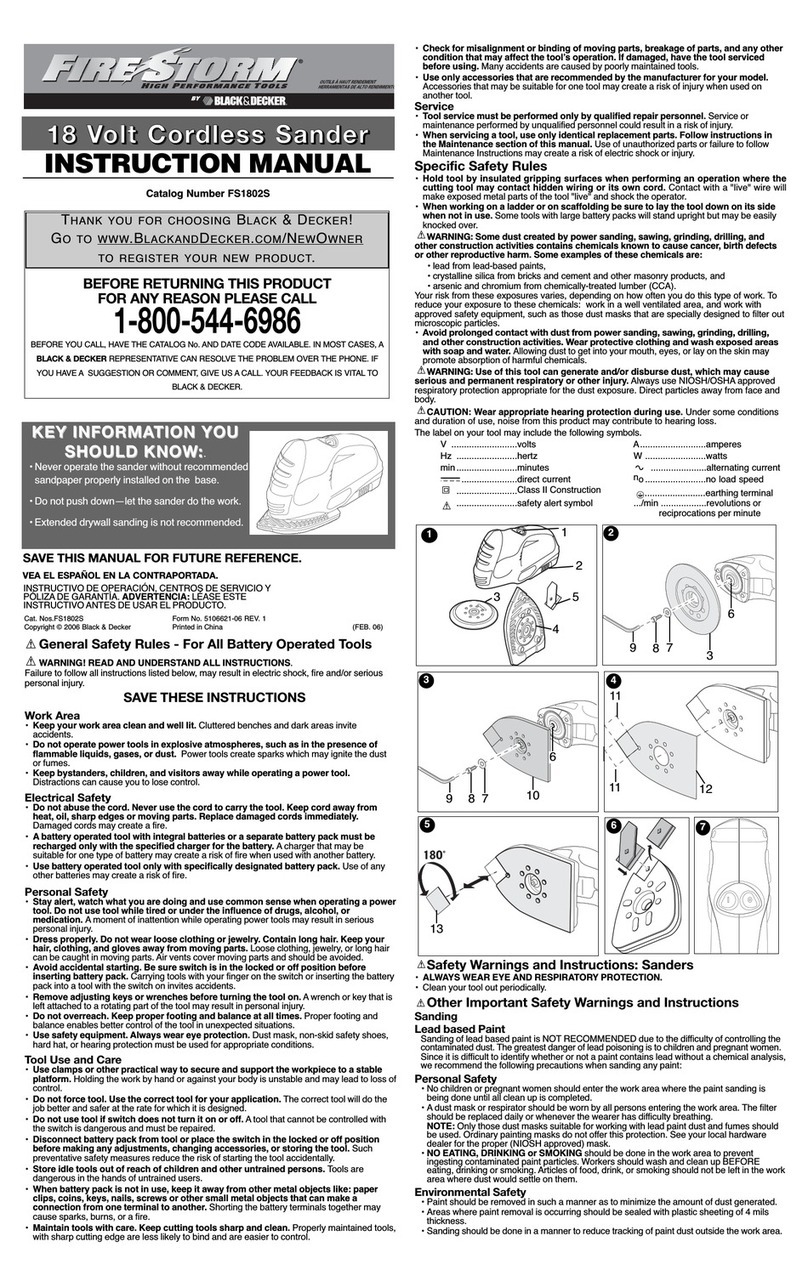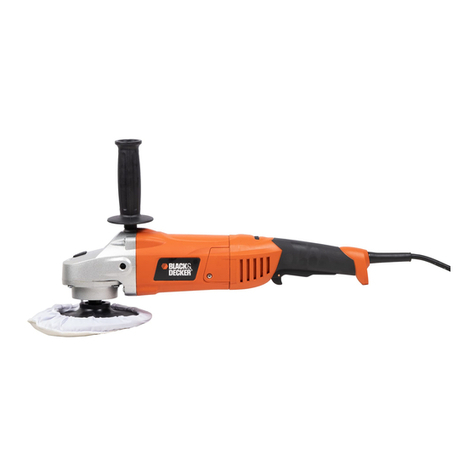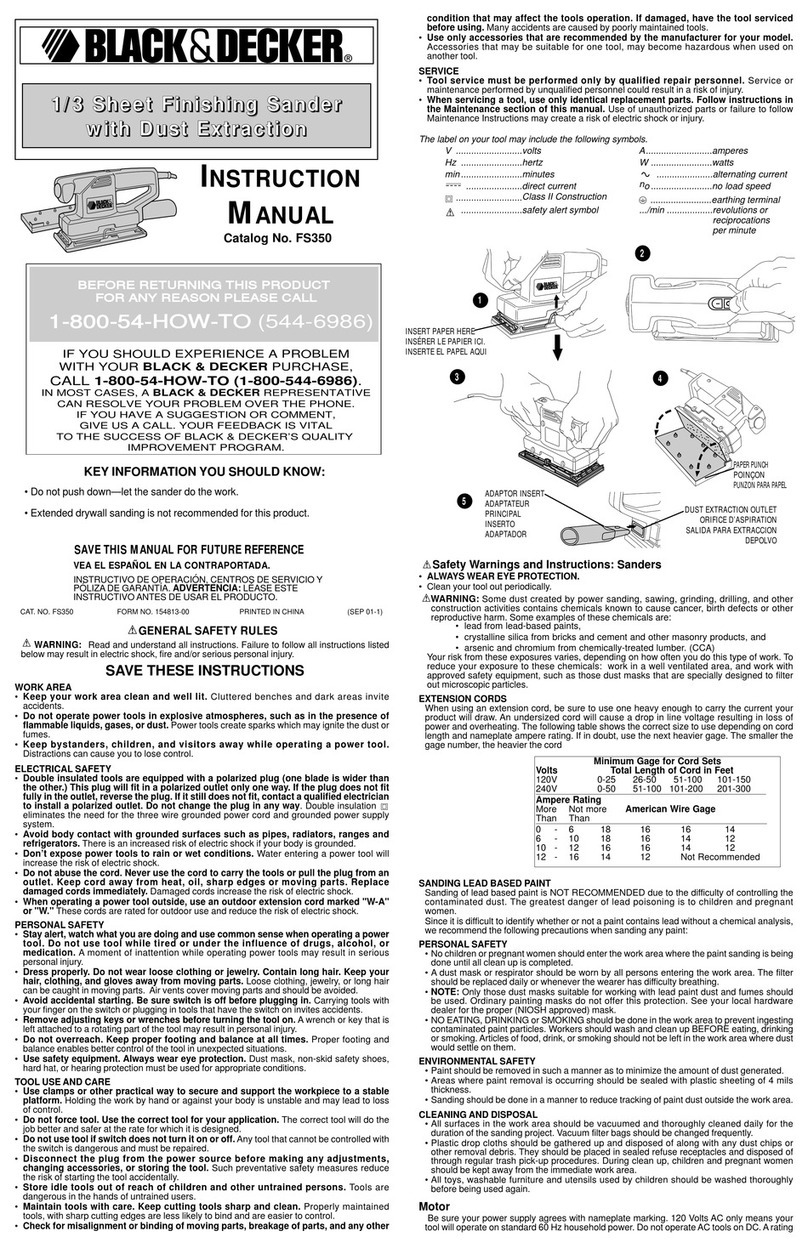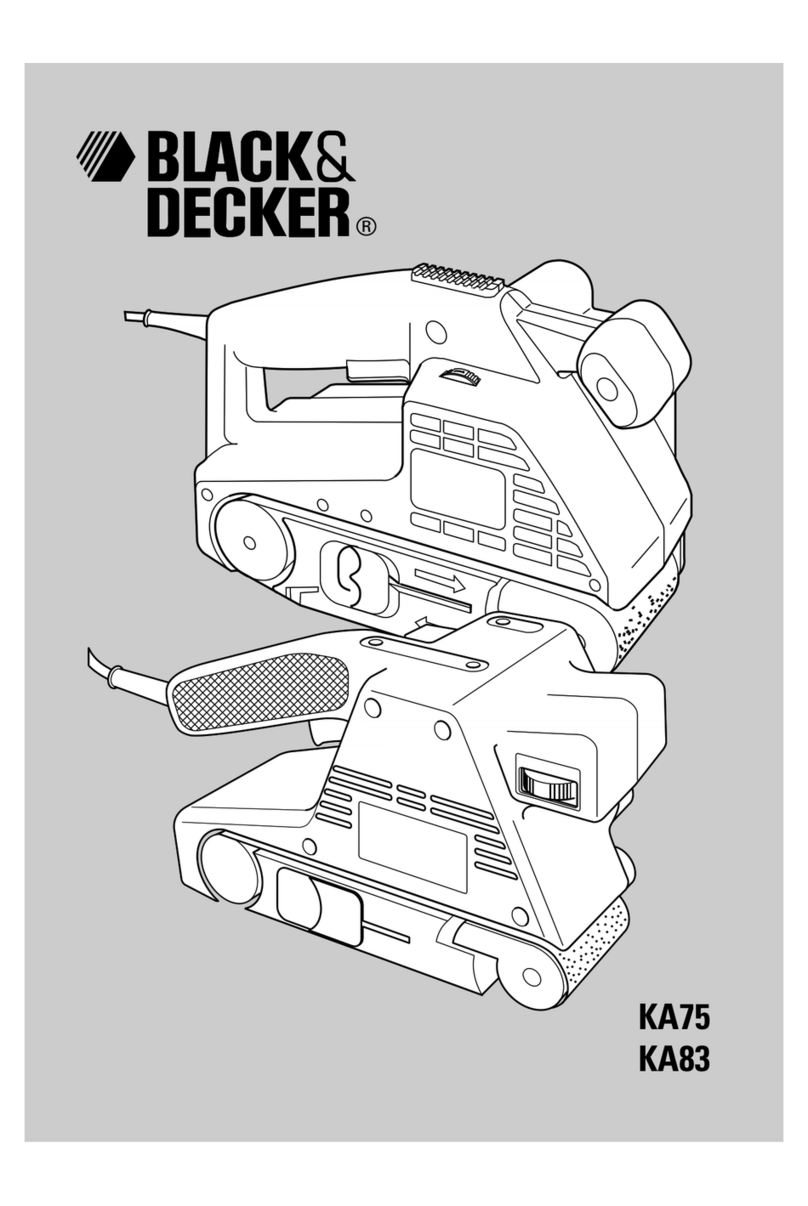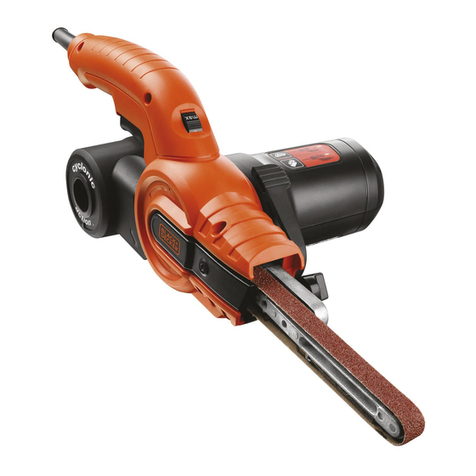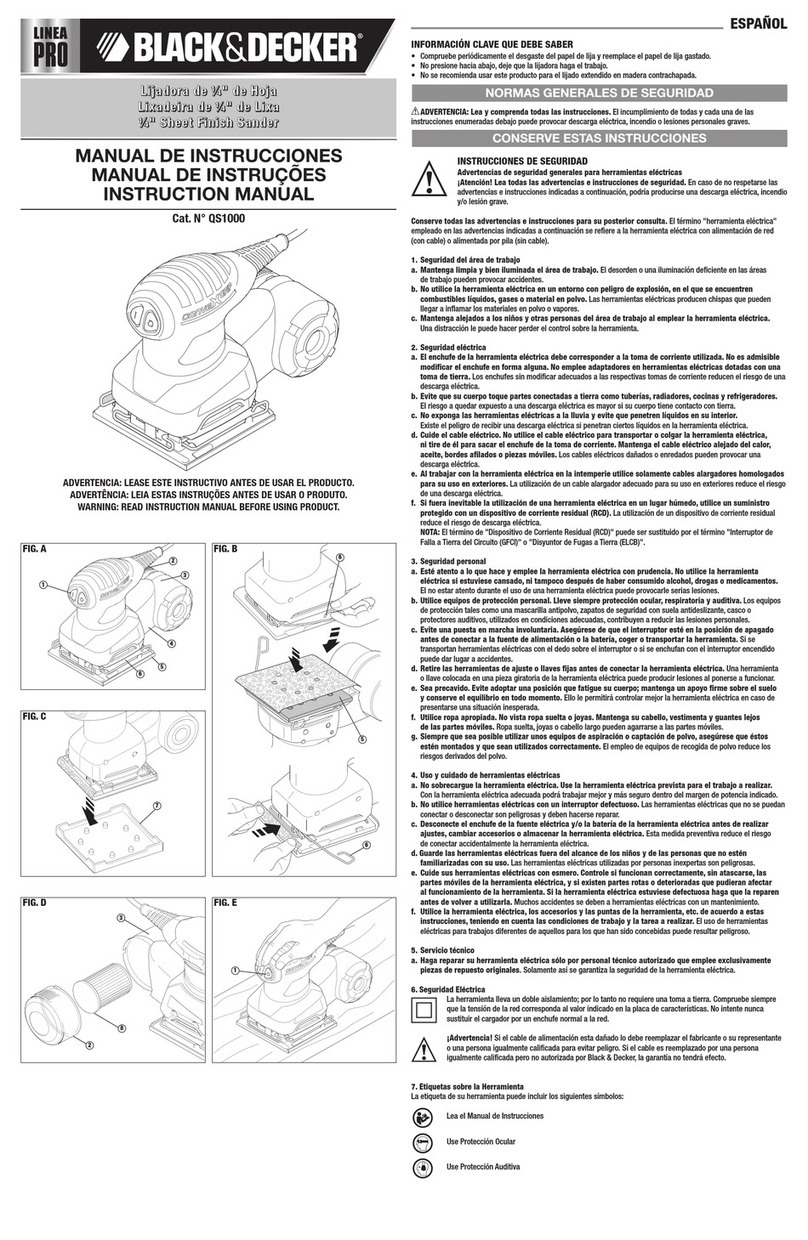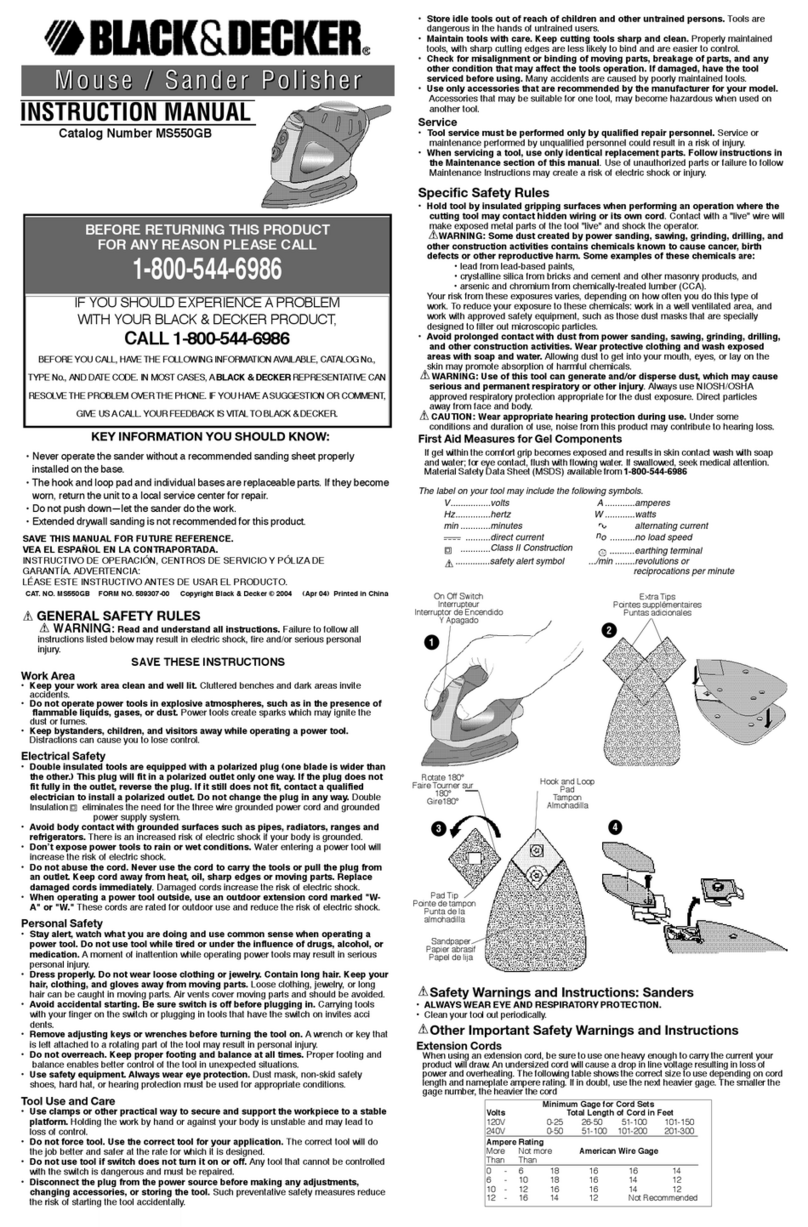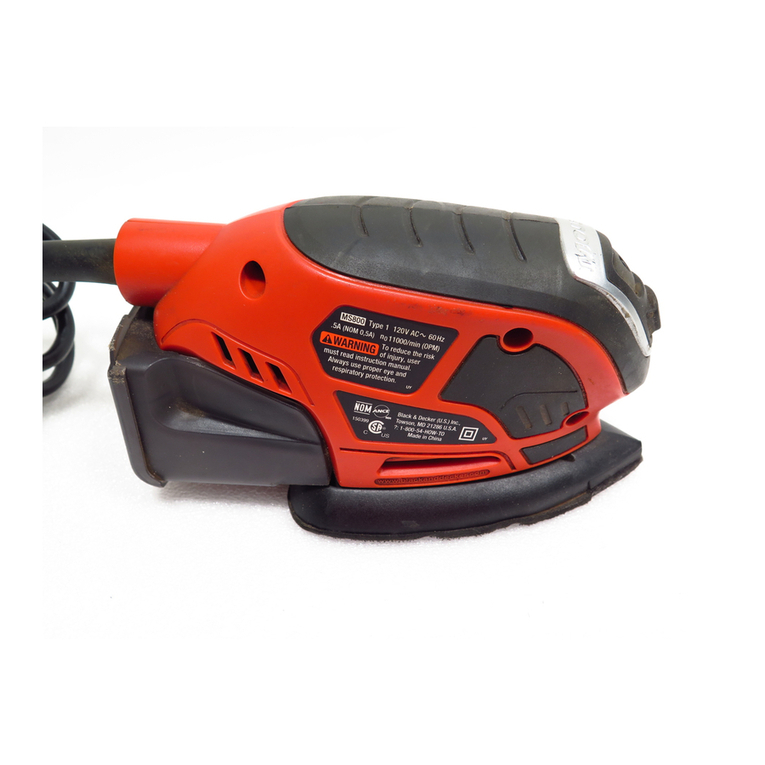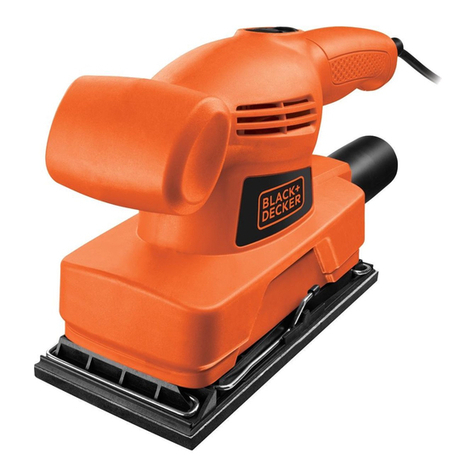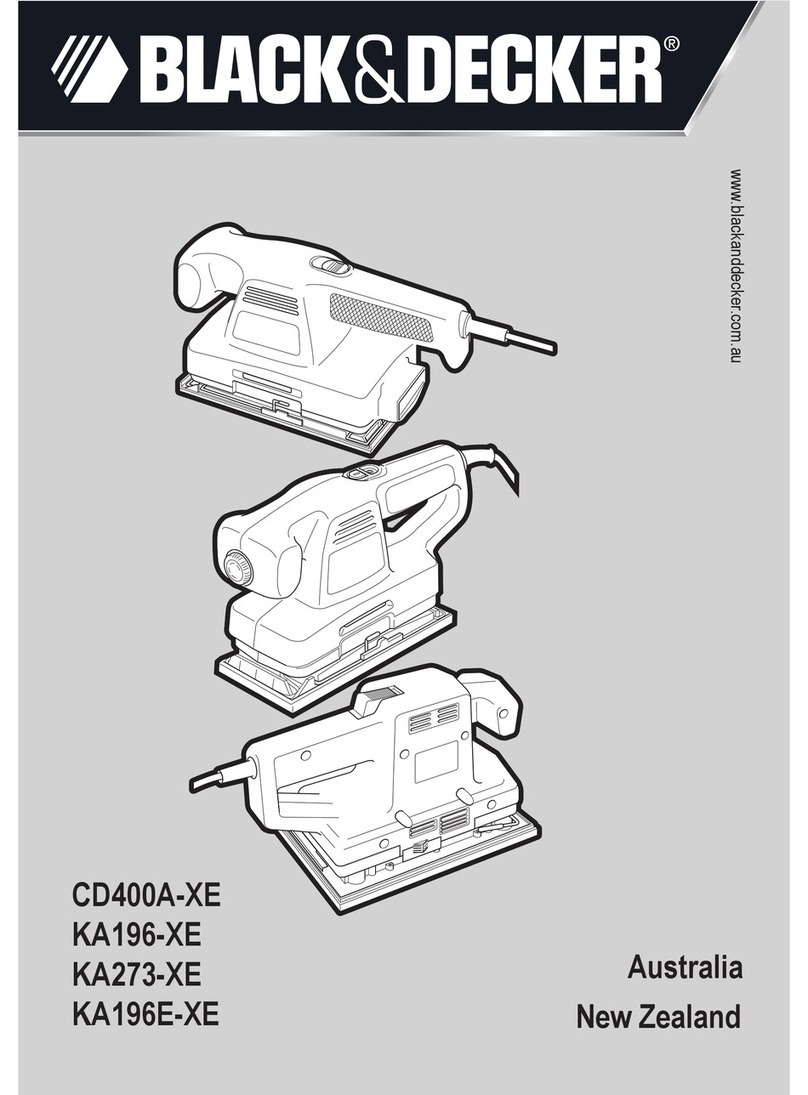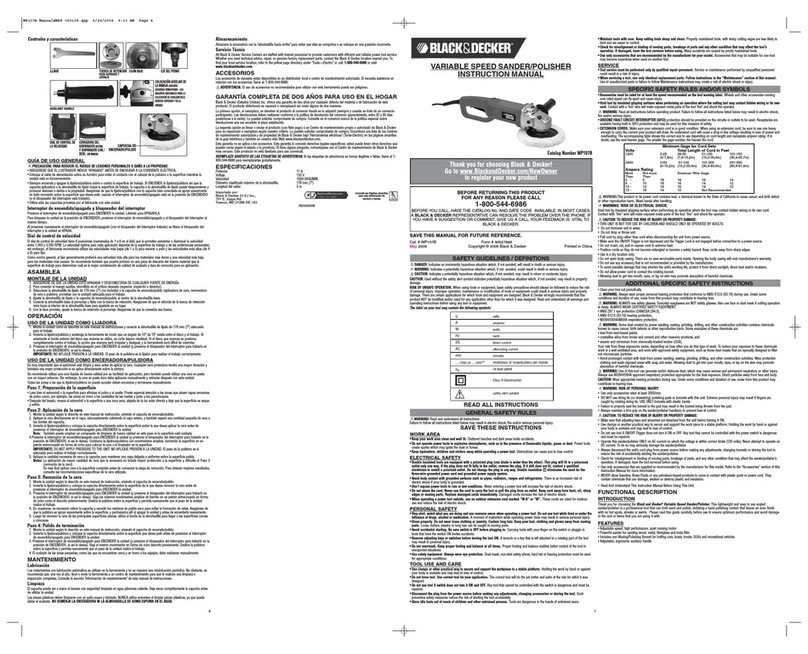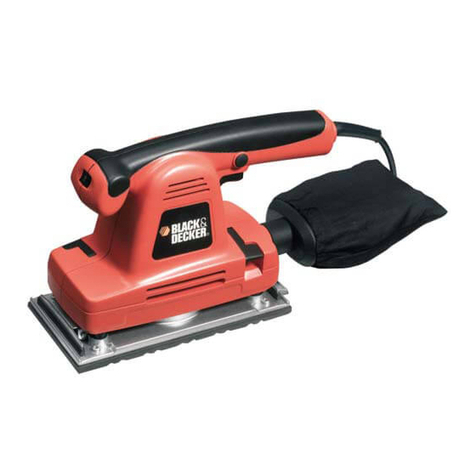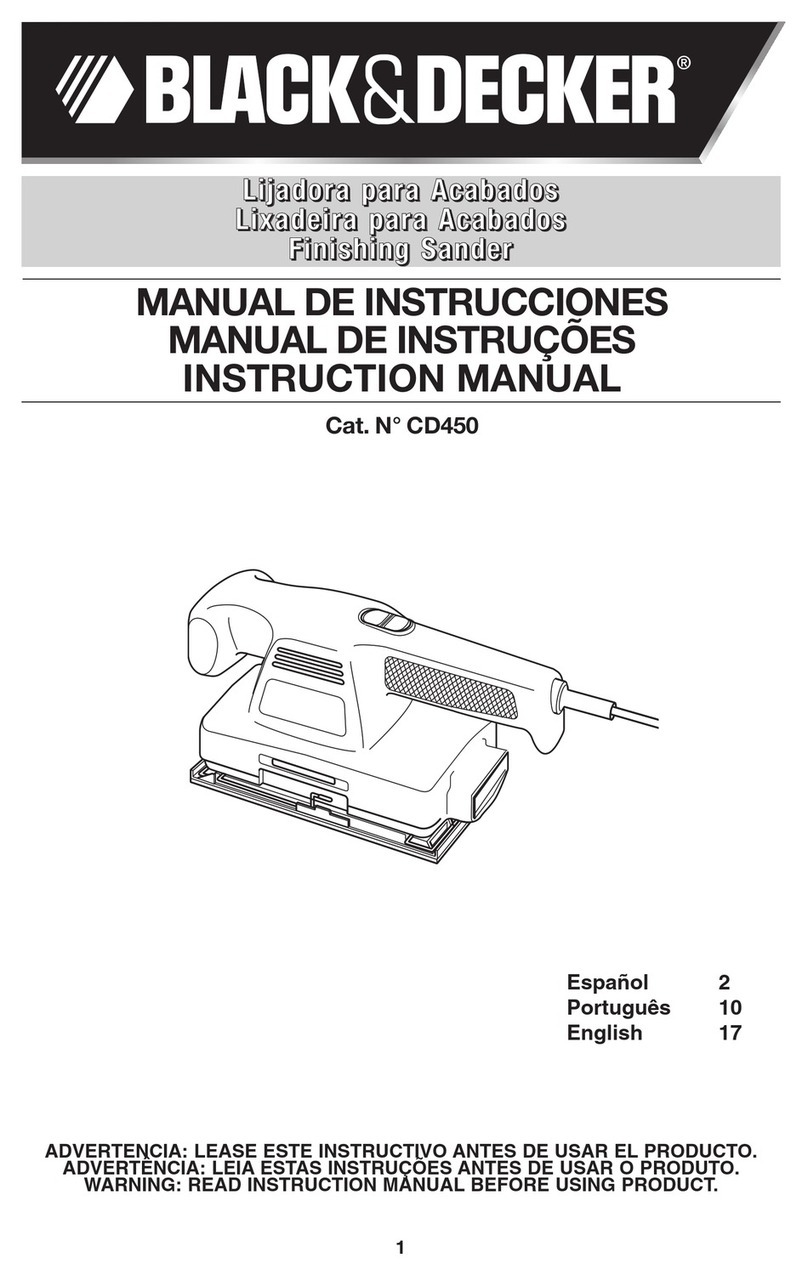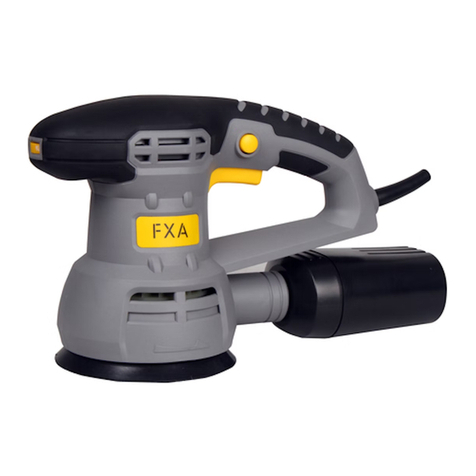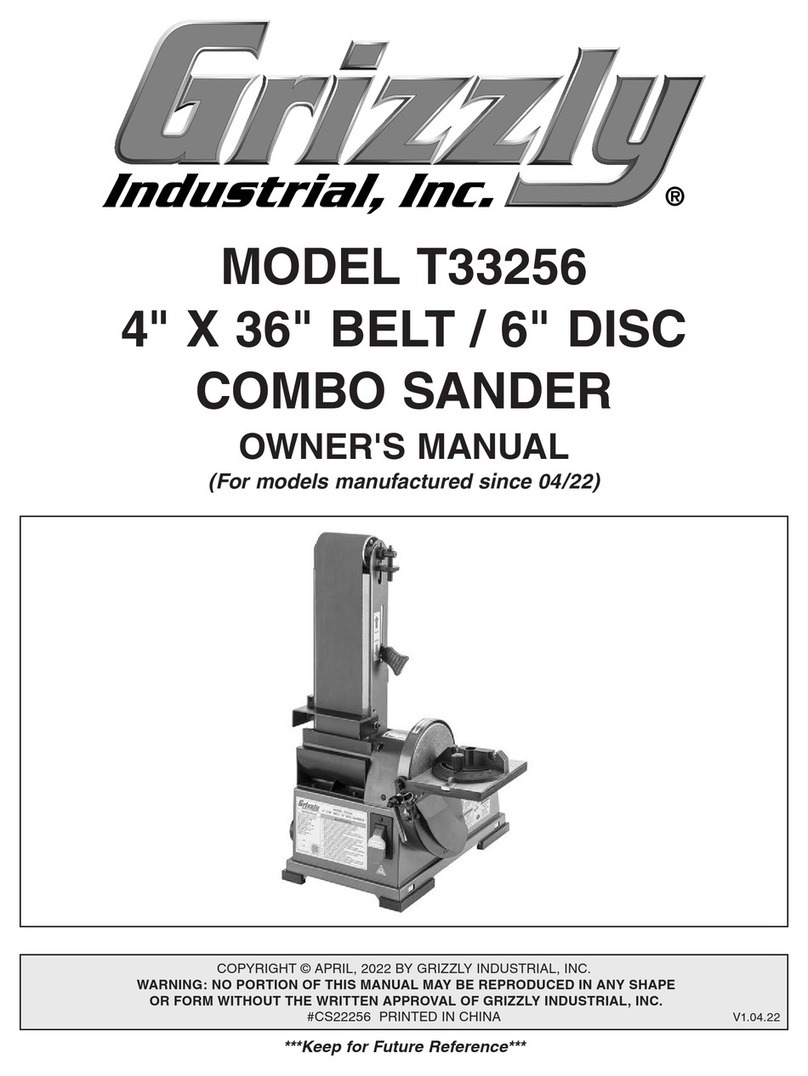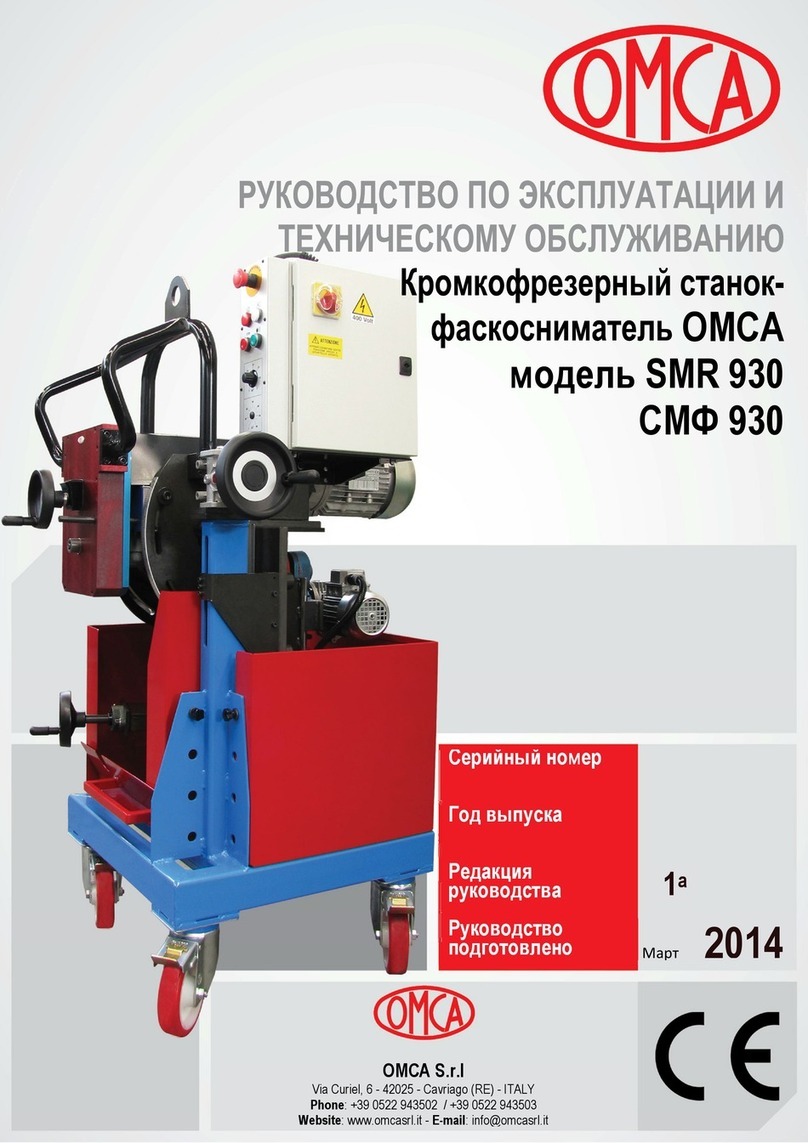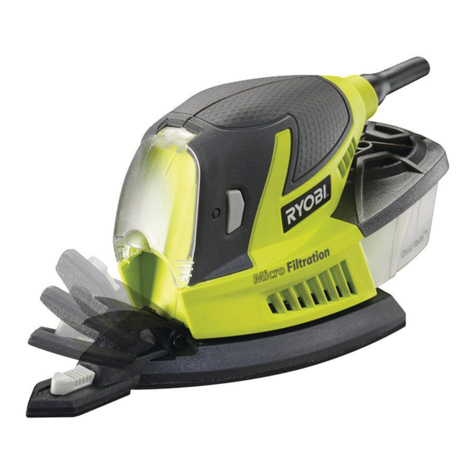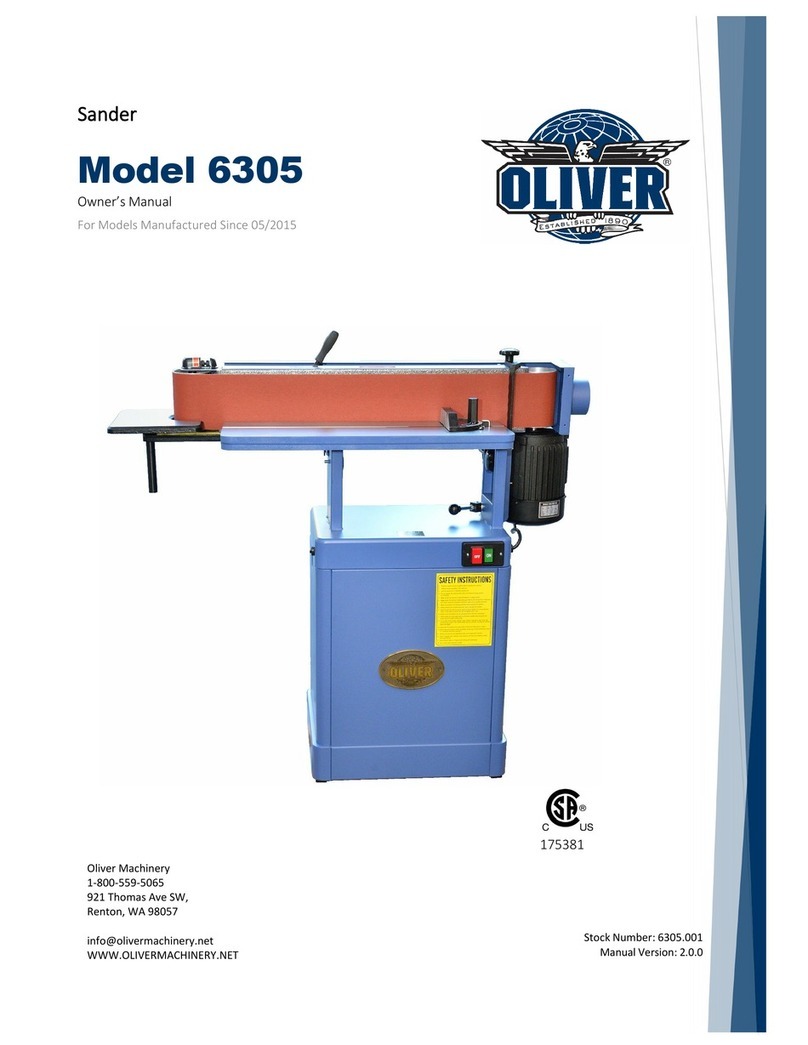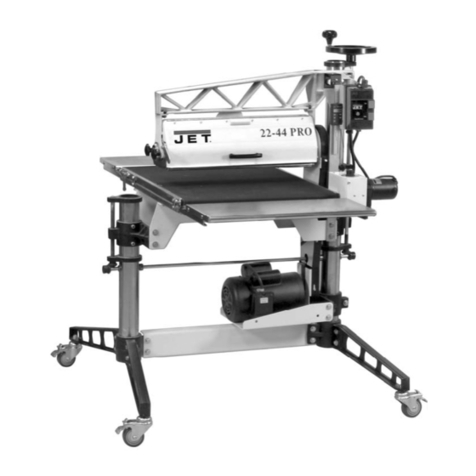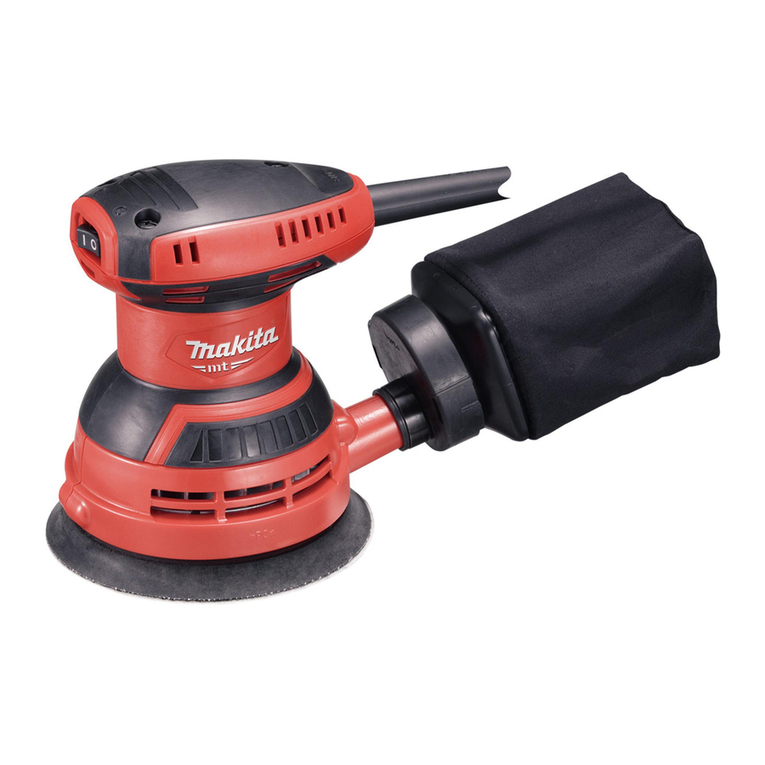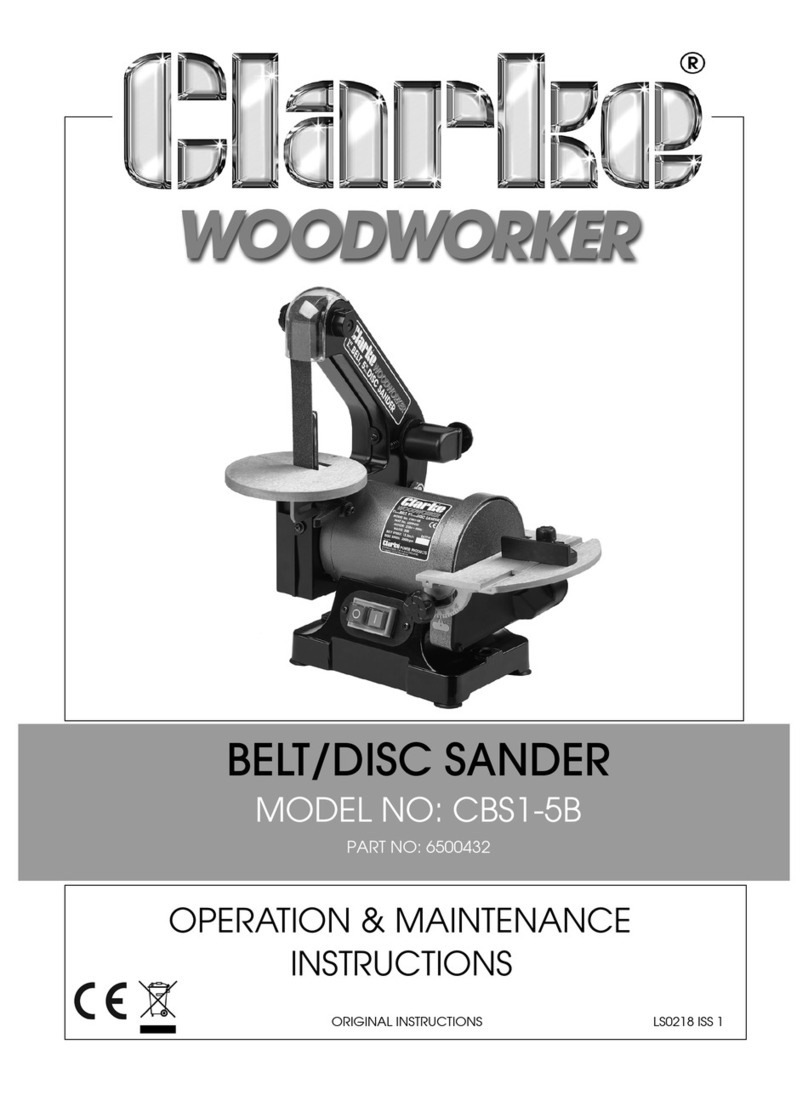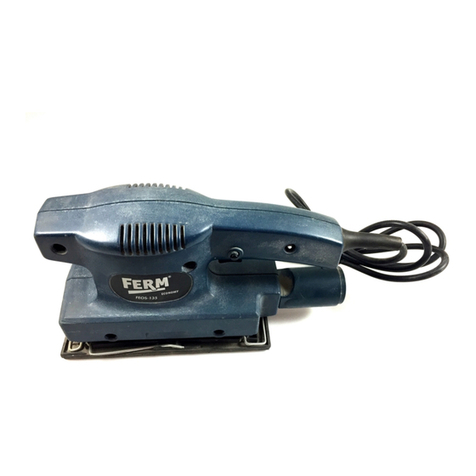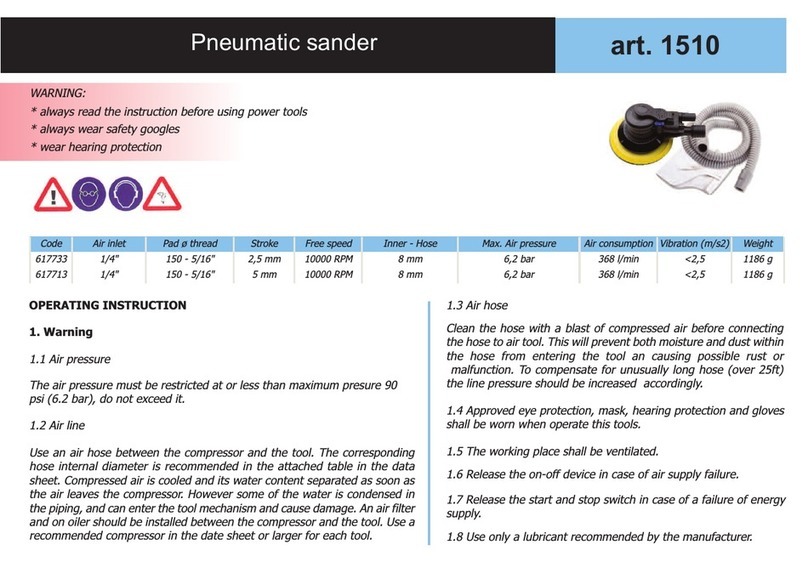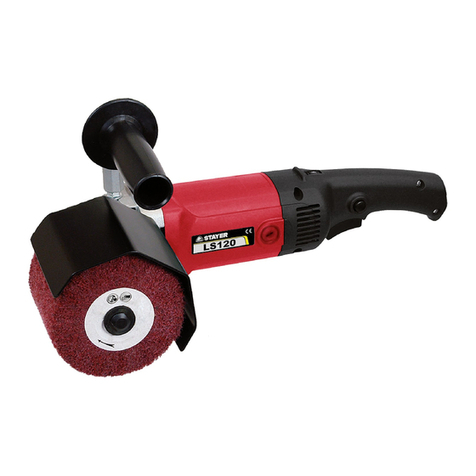
5
ENGLISH
Attaching and Removing Sanding Arm
(Fig.B)
Attaching
1. Loosen and remove the belt tracking knob5.
2. Check that the spring12 is located in its mountinghole.
3. Position the sanding arm2 asshown.
4. Thread in belt tracking knob and tighten it until the arm
is aligned with thetool.
Removing
1. Remove the sanding belt3 (if present) as
describedbelow.
2. Loosen and remove the belt trackingknob.
3. Remove thearm.
ASSEMBLY AND ADJUSTMENTS
WARNING: To reduce the risk of serious personal
injury, turn unit off and remove the battery pack
before making any adjustments or removing/
installing attachments or accessories. An
accidental start‑up can causeinjury.
The label on your tool may include the following symbols. The
symbols and their definitions are asfollows:
V.........................volts
Hz .......................hertz
min.....................minutes
or DC......direct current
......................Class I Construction
(grounded)
…/min.............. per minute
BPM....................beats per minute
IPM..................... impacts per minute
OPM.................... oscillations per
minute
RPM....................revolutions per
minute
sfpm ...................surface feet per
minute
SPM....................strokes per minute
A.........................amperes
W........................watts
Wh...................... watt hours
Ah.......................amp hours
or AC........... alternating current
or AC/DC.... alternating or direct
current
......................Class II Construction
(double insulated)
no.......................no load speed
n.........................rated speed
PSI.......................pounds per square
inch
......................earthing terminal
.....................safety alert symbol
.....................visible radiation
.....................wear respiratory
protection
.....................wear eye protection
.....................wear hearing
protection
.....................read all
documentation
• Use clamps or other practical ways to secure and
support the workpiece to a stable platform. Holding
the work by hand or against your body is unstable and may
lead to loss ofcontrol andinjury.
• Air vents often cover moving parts and should be
avoided. Loose clothes, jewelry or long hair can be caught
in movingparts.
CAUTION: When not in use, place tool on its side
on a stable surface where it will not cause a
tripping or falling hazard. Some tools with large
battery packs will stand upright on the battery pack
but may be easily knockedover.
Additional Safety Information
WARNING: Never modify the power tool or any part of
it. Damage or personal injury couldresult.
WARNING: ALWAYS use safety glasses. Everyday
eyeglasses are NOT safety glasses. Also use face or
dust mask if cutting operation is dusty. ALWAYS WEAR
CERTIFIED SAFETYEQUIPMENT:
• ANSI Z87.1 eye protection (CAN/CSA Z94.3),
• ANSI S12.6 (S3.19) hearing protection,
• NIOSH/OSHA/MSHA respiratoryprotection.
WARNING:
Some dust created by power sanding,
sawing, grinding, drilling, and other construction
activities contains chemicals known to the State
of California to cause cancer, birth defects or
other reproductive harm. Some examples of these
chemicalsare:
• lead from lead‑based paints,
• crystalline silica from bricks and cement and other
masonry products, and
• arsenic and chromium from
chemically‑treatedlumber.
Your risk from these exposures varies, depending on
how often you do this type of work. To reduce your
exposure to these chemicals: work in a well ventilated
area, and work with approved safety equipment, such
as those dust masks that are specially designed to filter
out microscopicparticles.
• Wear protective clothing and wash exposed areas
with soap and water. Allowing dust to get into your
mouth, eyes, or lay on the skin may promote absorption
of harmfulchemicals. Direct particles away from face
andbody.
• Use the appropriate dust extractor vacuum to remove
the vast majority of static and airborne dust. Failure
to remove static and airborne dust could contaminate the
working environment or pose an increased health risk to
the operator and those in closeproximity.
Environmental Safety
• Paint should be removed in such a manner as to minimize
the amount of dustgenerated.
• Areas where paint removal is occurring should be sealed with
plastic sheeting of 4milsthickness.
• Sanding should be done in a manner to reduce tracking of
paint dust outside the workarea.
Cleaning And Disposal
• All surfaces in the work area should be vacuumed and
thoroughly cleaned daily for the duration of the sanding
project. Vacuum filter bags should be changedfrequently.
• Plastic drop cloths should be gathered up and disposed
of along with any dust chips or other removal debris.
They should be placed in sealed refuse receptacles and
disposed of through regular trash pick‑up procedures.
During clean‑up, children and pregnant women should
be kept away from the immediate workarea.
• All toys, washable furniture, and utensils used by children
should be washed thoroughly before being usedagain.

